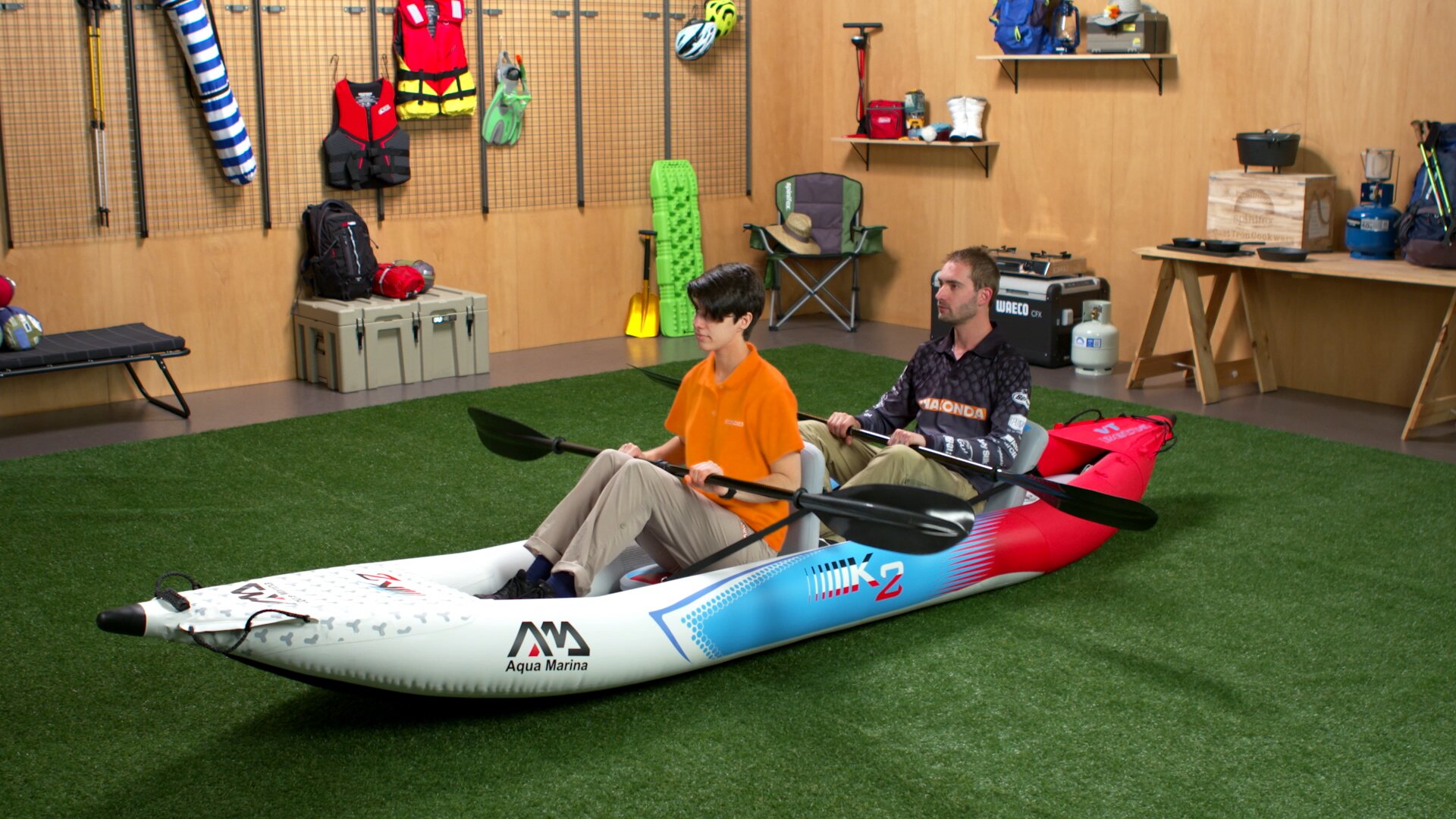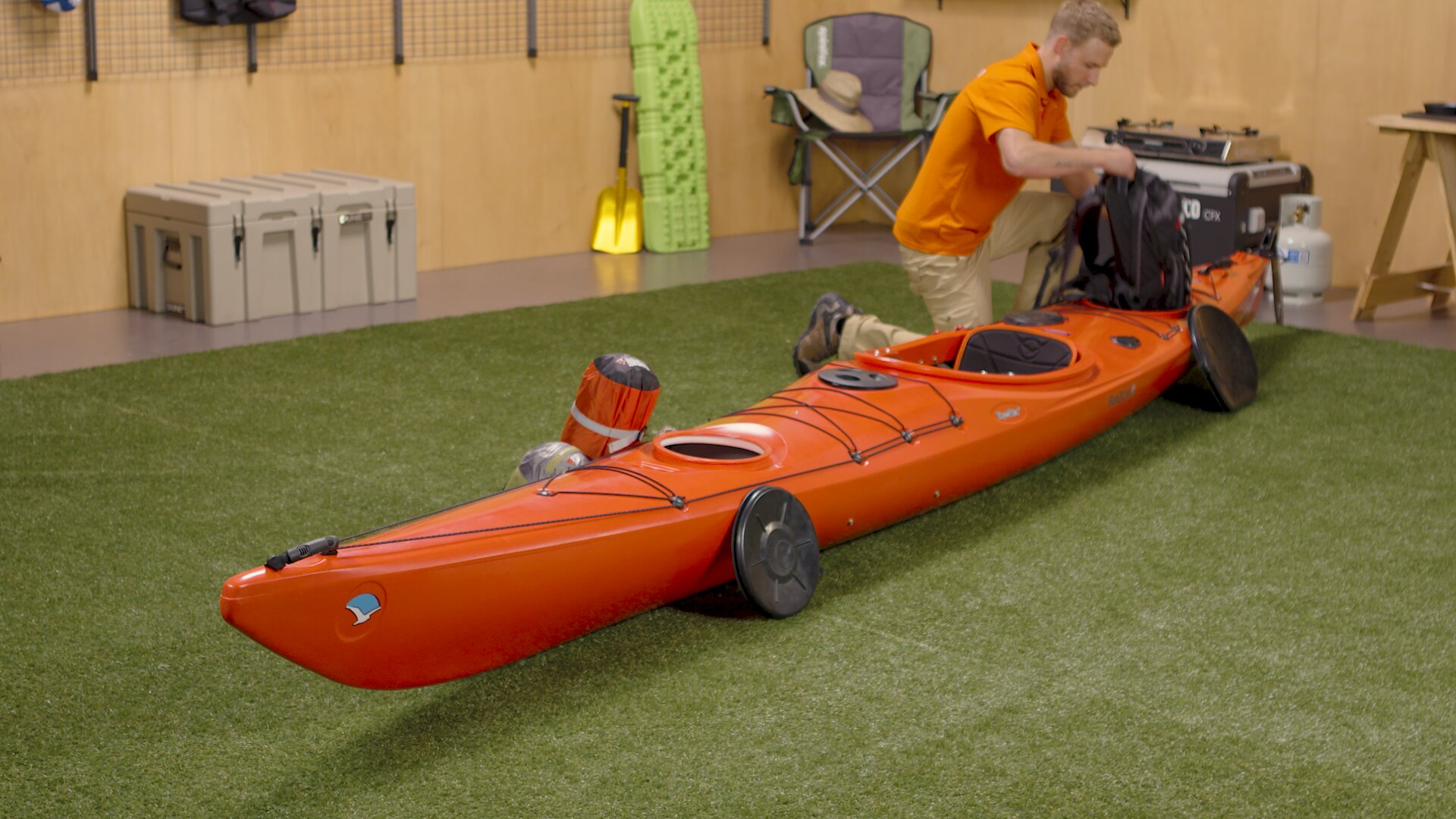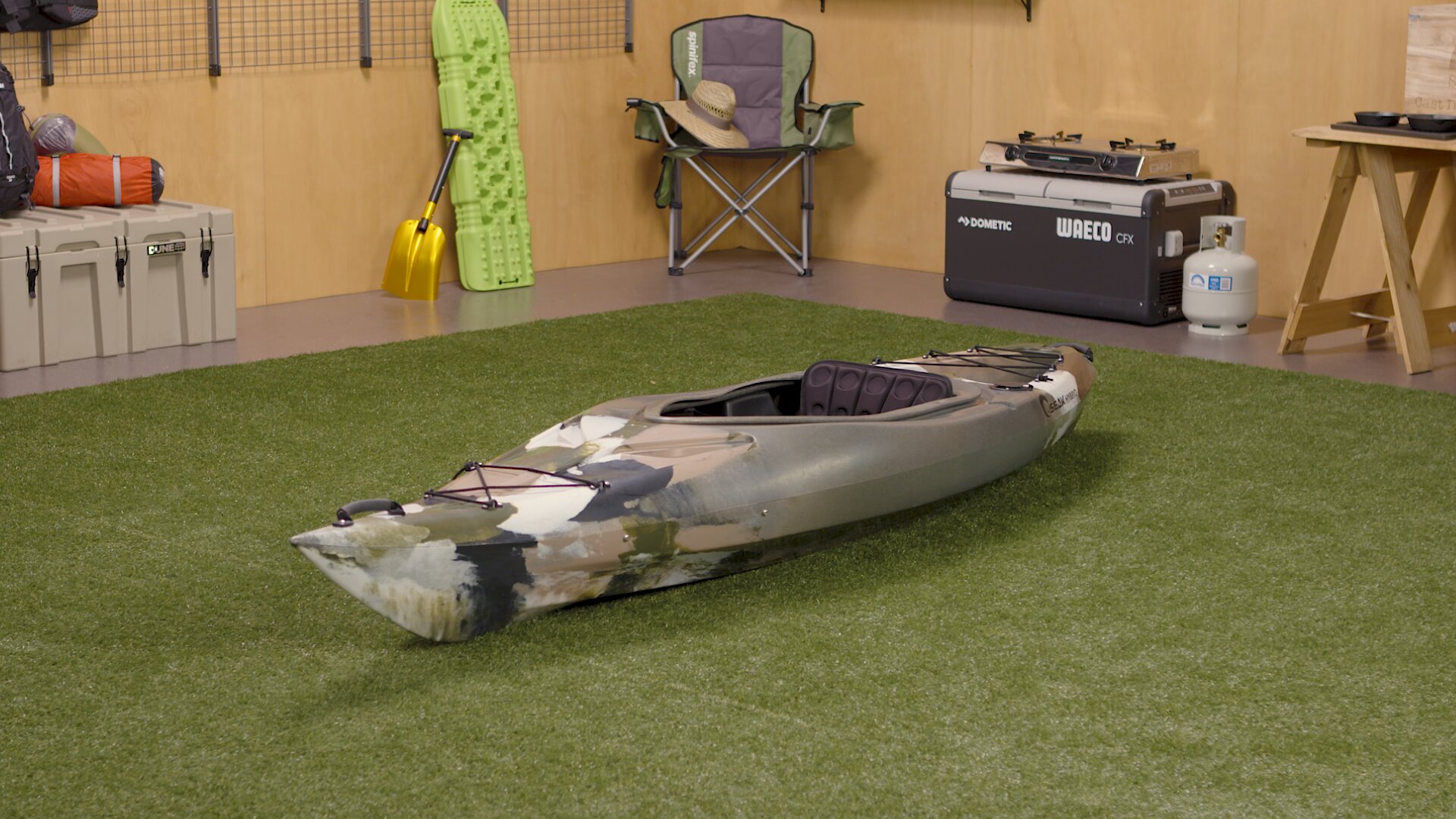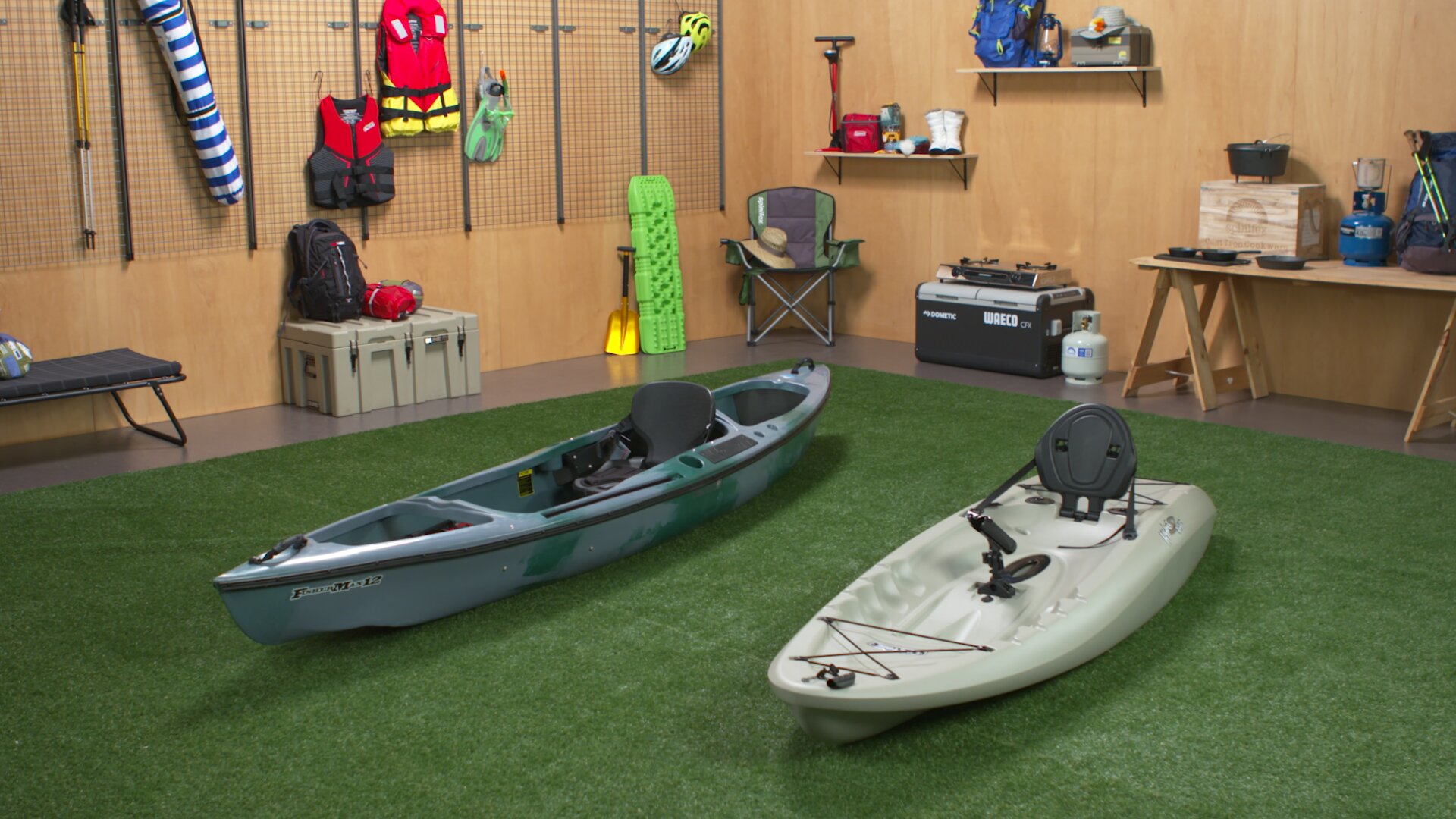| Your browser is not supported. | ||
|
Please browse our site using any of the following options:
| ||
How to pick the right kayak?
What's the best kayak?
Everyone's different, so what's best for one person might not suit someone else. The best kind of kayak for you depends on:
- Who'll be using the kayak (kids or adults? How tall, heavy, fit and experienced are they?)
- Where you'll be using the kayak (in wide-open still waters or narrow river rapids?)
- When you're going kayaking (in warm summer weather or on cold winter's days?)
- Your previous kayaking experience (are you a beginner, experienced or an advanced racer?)
- How often you'll be using the kayak and for how long (rarely or every weekend for years?)
- How long you want it to last for (a few summer days or years of beach days and camping?)
- Whether you can transport it to and from the water (do you have/need roof racks? A trolley?)
Which kayak should you buy?
Picking the right kayak is easier when you break it down into these six steps:
1. Type
Sit-on-top kayaks
How do sit-on-top kayaks work? They are:
- Open on top so water splashes onto the kayaker.
- Wider and more stable than a sit-in kayak.
- Easier to balance on than a sit-in kayak.
- Good for beginners and kids.
- Great for still waters and flowing rivers.
- Easier to get back into in the water if you fall off.
- Perfect for a quick swim or snorkel while paddling.
- Best for having some fun in hot weather.
- For one or two kayakers (in a tandem or double kayak).
Why do sit on top kayaks have holes? To drain the water that splashes in when you're paddling .

Sit-in Kayaks
A sit-in kayak:
- Has a capsule you sit in so your bottom half stays dry.
- With a skirt/cover added around your waist keeps water out.
- Is best for cold weather because it keeps you dry and warm.
- Is usually narrower and longer than a sit-on-top kayak.
- Helps you go fast and far in open water (lakes, bays etc.).
- Enables you to brace your knees for more powerful paddle strokes.
- Has a lower centre of gravity for more precise steering.
- Is better if you're kayaking for fitness and want to go further.
- Is better suited to sea kayaking and paddling in rapids.
- Has to go back to shore to get back in if you fall out.
- Is made for solo kayaking.
Inflatable Kayaks
An inflatable kayak:
- Can be deflated so it fits inside your car (no roof racks needed).
- Has to be inflated with a manual pump when you want to use it.
- Can be used on still water or really gentle rapids.
- Isn't as fast and is harder to steer than hard kayaks.
- Is made for one or two kayakers (double or tandem kayak).
- Like all inflatables, can get a puncture (so may not last as long ).

2. Use
Sit-in and sit-on-top kayaks can be used for:
- Recreation
- Touring
- Fishing
- Racing
Recreational Kayaks
A recreational kayak is:
- Best if you're paddling for a bit of fun.
- Stable, easy to steer and relatively comfortable.
- Perfect for kayaking beginners and children.
- Good for lakes, rivers or open coastal waters:
- Sit-in recreational kayaks suit still-water lakes and cold days in open ocean waters.
- Sit-on-top recreational kayaks give you more stability in moving water like rivers.
Touring Kayaks
What is a touring kayak? A touring kayak:
- Is best for all-day sightseeing and longer paddles for fitness.
- Is a great way to explore rivers, lakes and waterways.
- Gives you access to secluded places with no roads or trails.
- Has storage space inside to keep food and camping supplies dry.
- Has a weight limit (so weigh your gear then add your weight).
- Can be secured for lunch or overnight trips (just add an anchor ).
- Is generally shorter so easier to get to and from the water.
- Suits keen still-water beginners and experienced kayakers.
- That is wider will be more stable and easier to balance on.
- Can sometimes have a foot-controlled rudder for easier steering.

Fishing Kayak
- Gives you quick, easy access to deeper-water fishing.
- Is much cheaper than buying and maintaining a boat!
- Is lightweight, durable and easy to manoeuvre.
- Will have built-in rod holder(s) and usually a paddle holder as well.
- Can have central-mount rod holders or accessory mounts for a fish finder.
- Has enough space for your bait, gear and everything you catch.
- Can have a backrest (with built-in rod holders) or you can buy one separately.
- Is easy to steer if it's shorter - is faster if it's longer (so best for long distances).
- That is wide and you sit on is more stable for standing up.
- That is narrower and you sit inside is better for longer distances.
- Can be any kayak, but the above make fishing easier and more comfortable.
Racing Kayak
A racing kayak is:
- Extremely light, long and narrow to create maximum racing speeds.
- Harder to steer and balance so suits strong, experienced kayakers.
3. Shape
The kayak shape needs to suit the kind of kayaking you're doing and your level of experience:
- Length - shorter kayaks are easier to control and more stable - longer kayaks are faster.
- Width - a slim kayak is faster but less stable, a wide one more stable but harder to steer.
- Long, narrow kayaks are:
- Short, wide kayaks are:
- Stable and easy to maneuver.
- Slower than long, narrow kayaks.
- Good for narrow, winding, fast flowing rivers and canals.
- Best for kayaking in white water rapids.
- Weight - lighter kayaks are faster and easier to maneuver and transport.
- Hull - if the underside of the kayak (the hull) is:
- V-shaped - it cuts through the water better in a straighter line but is less stable.
- Flat - it has more contact with the water so it's more stable and easier to turn.
- A blend - it's v-shaped at both ends and flat in the middle (for the benefits of both).
- Rocker - how much the hull curves from front to back is called 'the rocker'.
- A rocker that curves more is easier to maneuver but slower.
- A rocker with less of a curve is faster but harder to maneuver.
- Backrest - some kayaks have built-in back support for more comfort and less fatigue (or you can buy one for lumbar support separately).

4. Materials
Kayaks and paddles can be made from different materials, and each one has its pros and cons:
Plastic or aluminum
- Are the most affordable options.
- Are both durable materials.
- Can be heavy and feel cold in winter.
- Best for beginners.
Fibreglass
- Light and easy to carry.
- Tough and long lasting.
- Best for frequent paddlers.
Carbon fibre
- The strongest of all the materials.
- Quite light for how long lasting it is.
- Best for keen kayakers who want years of use.
Inflatable materials
To reduce the risk of punctures, inflatable kayaks are usually made from:
- Really tough PVC.
- The latest Kevlar.
Built-in wheels
- Make getting your kayak to and from the water easy.
- Some kayaks have built-in wheels to simplify transport.
- For kayaks without wheels, you can get a kayak trolley (sold separately).
5. Paddle
The right paddle makes kayaking an easier and more enjoyable experience.
The best kayaking paddle for you depends on:
- Your strength and trip length.
- Your paddling style.
Your strength and trip length
Every time you paddle you're using your arm, back and stomach muscles, so:
- Get the lightest paddle you can so your arms don't tire too quickly (even if you're strong).
- On long trips with thousands of strokes, a paddle that's too heavy will slow you down.
Your paddling style
For speed, you'll need a paddle with a large blade that's:
- Asymmetric in shape.
- Slightly curved to cut through the water quicker.
- Feathered - that means the two blades face in different directions:
- This reduces wind resistance so the paddle in the air doesn't slow you down.
- Smaller differences in the angles are easier on your wrists.
- Larger differences will cut through the water quicker.
- Some paddles let you adjust the blade angles to suit you.
- Held more vertically and higher in the water when you're paddling.
For slower paddling that suits kids and beginners, you'll want the opposite:
- A symmetrical blade.
- Straight sides.
- Non-feathered blades that face the same way.
Adjustable paddles
- Can be lengthened, shortened and rotated to suit different conditions and paddlers.
- Make it easier and more comfortable for everyone to take turns on the same kayak.
- Can sometimes be split into two parts to make carrying and transporting them easier.
- Need to be washed in fresh water after each use so the mechanism doesn't get rusty.
- May not last as long as a single-piece paddle as a result of the joint mechanism.
Paddle safety
To ensure you're not stuck out in the ocean or up the creek without a paddle:

6. Quality
When you're weighing up which kayak to buy, think about quality versus cost:
- Plastic and aluminium paddles are the cheapest but heaviest so hardest on your body.
- Sit-on-top recreational kayaks are usually cheaper than sit-in touring and fishing kayaks.
- Carbon fibre kayaks and paddles are the lightest and easiest to use so most expensive.
When it comes to how much you should spend on a kayak:
- If you're just after a kayak the kids can play with, a cheap one should do the trick.
- Cheap kayaks may not last as long as most costly kayaks, so you get what you pay for.
- Whatever you spend on a kayak, you're saving on future kayak rental fees.
- You'll only need a kayak and paddle to start off with - then you can add accessories for extra comfort once you've got the hang of paddling.
- If you're a beginner, you won't spend top dollar on features beyond your needs.
- If you want to do lots of kayaking in comfort for years to come, it might be worth spending a bit more on a good-quality kayak.
Who sells kayaks?
Anaconda! Find your nearest Anaconda store.
How much are kayaks?
Anaconda has kayaks ranging in price from:
- $99 to $199 for kids.
- $199 for adults to $1799 for the best fishing kayaks.
Are there any cheap fishing kayaks?
Anaconda's cheapest fishing kayak is $599.
What fishing kayaks are for sale online in Australia?
Here are all the fishing kayaks Anaconda sells.
The quick way to find the right kayak
When you go to the Water Sports section on the Anaconda website then click on kayaks, you'll see tick box filters down the left hand side of the page. Using these filters makes working out which kayak to buy easier and faster because you can choose to filter what you see by:
- Price - so you only see kayaks that are within your budget on the page.
- Deal - so you only see all the kayaks that are on sale or at clearance prices.
- Categories - to just see fishing, touring, recreation, kids, beach or sit-on-top kayaks.
- Size - so you can just see kayaks that are the length (or length and width) you want.
- Brand - so you can see the kayaks made by a specific brand you know and like.
Other Beach & Surf Essentials
Check out Anaconda's range of Beach & Surf products available online or visit your local store.